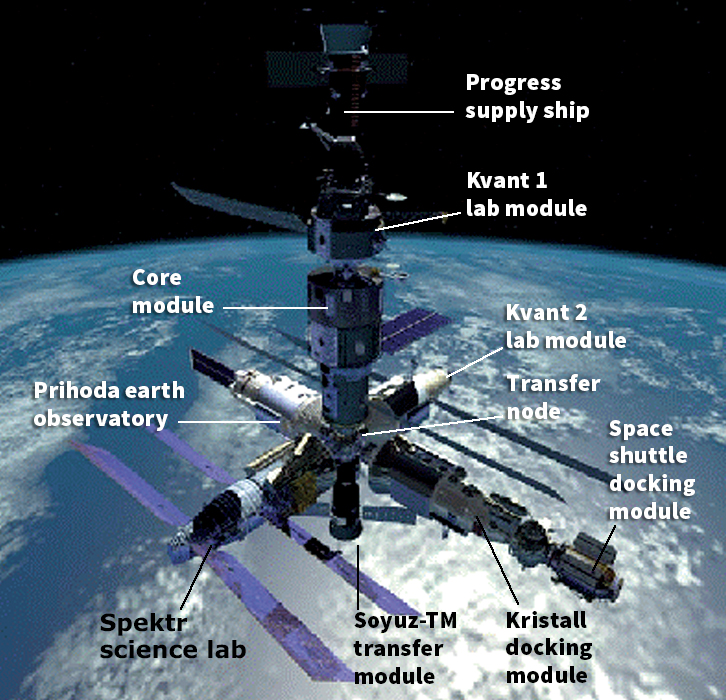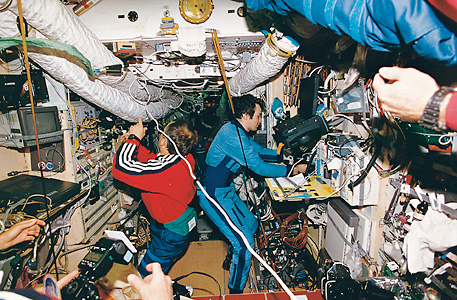Mir was a pioneering space station that orbited Earth for over 15 years. The station, which was built by the Soviet Union, consisted of several separately launched spacecraft or modules. The first module went into orbit in 1986, and the station was destroyed in 2001. Mir is Russian for peace.

The Soviet Union began to assemble Mir during the years of the “space race” competition between the Soviet Union and the United States. The Soviets intended to operate Mir for five years. But the Soviet Union collapsed in 1991, and what became the Russian space industry went into decline. As a result, the Russians extended Mir’s lifetime, rather than build another station.

Equipment breakdowns and human errors led to several accidents. In an especially dangerous accident in June 1997, a Progress ship collided with a module known as Spektr. The crash opened a small hole in the module, which began to leak air. The crew quickly sealed off Spektr.
Due to budget restrictions, Russia ended the Mir project in March 2001. One reason for the restrictions was Russia’s role in the construction of the International Space Station, which began in 1998. Russia destroyed Mir by guiding it into the atmosphere. Much of the station burned, and the remainder fell into the Pacific Ocean.
The first part of Mir to go into orbit was the Core Module, or Base Block. This module was a modified version of Salyut space stations that the Soviets orbited from 1971 to 1982. The module had docking ports at both ends. Docked at one end was the Kvant 1 laboratory and life-support module, which was launched in 1987. Attached at the other end was the Transfer Node, a large, hollow ball with five docking ports and a door to the Core Module.
The five ports faced different directions, like the sides of a cube. The port opposite the Core Module was available for Soyuz-TM vehicles, which transported crew members. Docked at the other four ports were (1) Kvant 2, a lab with a large air lock and life-support facilities, launched in 1989; (2) Kristall, launched in 1990 as a docking module for a planned Soviet shuttle; (3) Spektr, a science laboratory, launched in 1995; and (4) the Priroda earth observatory, launched in 1996. In 1995, the U.S. shuttle Atlantis left a docking module attached to Kristall for future shuttle flights. An assembly of the permanent modules, a Soyuz-TM, and a Progress supply ship measured 107 feet (33 meters) in length.
